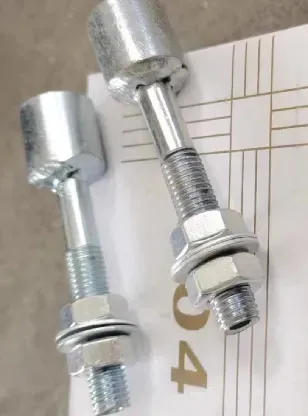loading...
- No. 9, Xingyuan South Street, Dongwaihuan Road, Zaoqiang County, Hengshui, Hebei, China
- admin@zjcomposites.com
- +86 15097380338
- Welcome to visit our website!
Durable and Lightweight Fiberglass Bar Grating Solutions for Various Applications
Understanding Fiberglass Bar Grating An Overview
Fiberglass bar grating is a versatile and innovative material used widely in various industrial and commercial applications. Made from fiberglass reinforced plastic (FRP), this type of grating offers a combination of strength, durability, and corrosion resistance, making it an ideal choice for environments that are harsh or corrosive.
Composition and Manufacturing Process
Fiberglass bar grating is produced by combining fiberglass strands with a resin, typically polyester or vinylester. This mixture is molded into a specific shape or pattern, allowing manufacturers to create a product that meets the desired strength and weight requirements. The manufacturing process can be tailored, optimizing the grating for specific applications, whether that be lightweight options for hand-rail systems or heavy-duty gratings for industrial flooring.
Advantages of Fiberglass Bar Grating
One of the primary benefits of fiberglass bar grating is its corrosion resistance
. Unlike metal grating, which can rust and degrade over time when exposed to moisture or chemicals, fiberglass remains unaffected in such environments. This property makes it particularly suitable for facilities in the chemical, food processing, and pharmaceutical industries, where corrosive substances are frequently present.Moreover, fiberglass grating is lightweight compared to traditional materials like steel and aluminum. This feature not only makes it easier to handle and install but also reduces the overall load on structures, which can lead to cost savings in support systems and foundation requirements. The lightweight nature of the grating also results in decreased transportation costs, as more product can be shipped at once.
fiberglass bar grating

Safety is another critical aspect to consider. Fiberglass bar grating has slip-resistant surfaces that provide excellent traction, making it a safe choice for flooring, walkways, and platforms. This is particularly important in industrial settings where spills and wet conditions can increase the risk of slips and falls.
Applications of Fiberglass Bar Grating
The versatility of fiberglass bar grating has led to its application in a vast array of industries. It is commonly used for walkways, platforms, stair treads, and trench covers. In wastewater treatment facilities, for instance, the corrosion-resistant nature of fiberglass allows for long-lasting installations that minimize maintenance efforts.
Beyond industrial uses, fiberglass grating has found a place in architecture and design. Its aesthetic appeal and customizable options allow architects to integrate it into various design elements, whether for outdoor decking or as part of a decorative facade.
Conclusion
In summary, fiberglass bar grating is an advanced material offering numerous benefits, including corrosion resistance, lightweight properties, and safety enhancements. Its diverse applications across various industries underscore its importance in modern construction and design. As industries continue to seek materials that combine durability with cost-efficiency, fiberglass bar grating is well-positioned to meet these demands, making it a reliable choice for both present and future projects. With its unique characteristics, fiberglass grating not only satisfies functional needs but also enhances the safety and aesthetic considerations crucial in today’s industrial and commercial environments.
-
The Rise of FRP Profiles: Strong, Lightweight, and Built to LastNewsJul.14,2025
-
SMC Panel Tanks: A Modern Water Storage Solution for All EnvironmentsNewsJul.14,2025
-
GRP Grating: A Modern Solution for Safe and Durable Access SystemsNewsJul.14,2025
-
Galvanized Steel Water Tanks: Durable, Reliable, and Ready for UseNewsJul.14,2025
-
FRP Mini Mesh Grating: The Safer, Smarter Flooring SolutionNewsJul.14,2025
-
Exploring FRP Vessels: Durable Solutions for Modern Fluid HandlingNewsJul.14,2025
-
GRP Structures: The Future of Lightweight, High-Performance EngineeringNewsJun.20,2025
